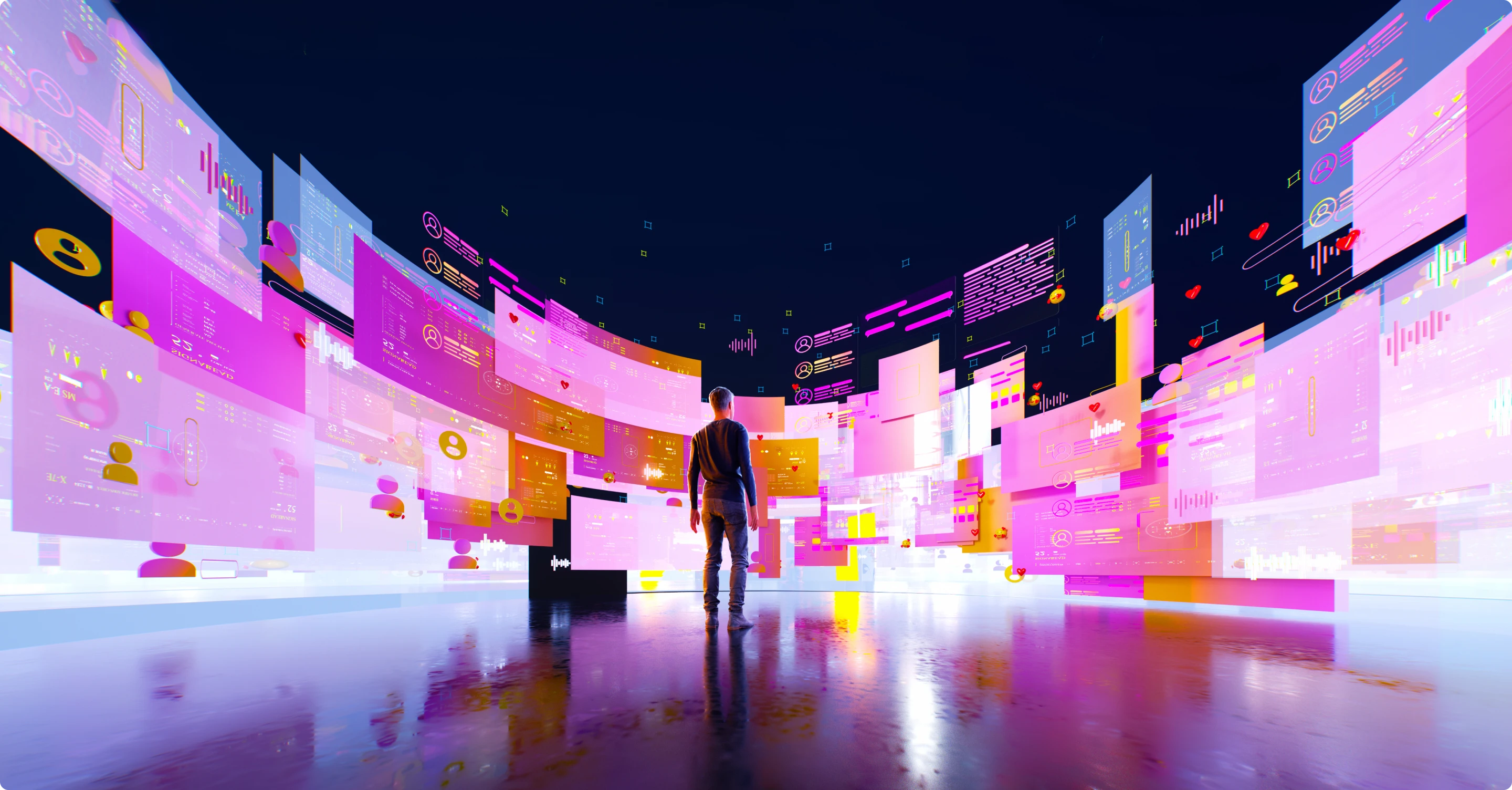Visual storytelling in B2B: why does it work, and which forms score?

The evolution: from infographic to experience
The classic infographic - which we saw popping up in newspapers and magazines years ago - was a first step: a static image that visualized data. But in the meantime, visual storytelling has evolved into a digital experience.
The technical possibilities are vast. Think animated flows, game experiences, interactive maps or data-driven scrolling stories.
Check out some of JaJa's visual stories here:
JaJa Atelier
The right form: structure as content choice
Visual storytelling is not a template, but a playing field. Each story requires a different form. That structure is best chosen from a logic of content, not aesthetics. For example:
A spatial exploration
You enter a physical place (which may or may not really exist) where you have different experiences.
Timeline
Show or experience a history or future vision, paying attention to coherence and rhythm.
Cause-and-effect structure
Ideal for depicting an abstract theme without excessive text.
Interactive map or data visualization
Create a story world based on elements from the geographical context, reports or technological elements.
Roadmap
Perfect for visualizing a process, methodology or customer journey.
These are just a few of the dozens of possible story structures. With the right elaboration, almost anything is possible. In a successful visual story, the form and the story meld into one harmonious whole, shaping your message.
What makes visual storytelling so powerful?
Visual stories realize extra impact for several reasons:

From content to experience: how to build a visual story?
A strong visual story is not created in one pull. It's an iterative, multidisciplinary process in which content acuity, visual thinking and storytelling technique converge. This is what it ideally looks like:
1. Curate and structure content
Start with a sharp briefing: target audience, objective, central message. Gather content, but reduce to essentials. Find the core, not the completeness. Translate that message into an insight or hook that makes your target audience look at your basic statement in a new way.
2. Visual thinking and storytelling techniques.
Sketch different visual ideas, story worlds, characters and story lines. Which structure best fits your purpose? Who or what will be the hero of your story? Which opening scene grabs your target audience immediately by the ear? This is when creative sketches, wireframes and rough storyboards appear on the drawing board.
3. Working out story and form in parallel
Let text and image grow together. Good visual storytelling occurs in dialogue: text pushes form forward, and vice versa. This is where coherence arises.
4. Technical translation and interaction
Work with tools that fit your story. Consider interaction, animation, sound, responsiveness. Also consider load time, platforms and shareability.
5. Testing, fine-tuning, optimizing
Is the message clear on mobile? Does the flow make sense? Step into your target audience's shoes with every click or swipe. Sometimes that requires technical adjustments, sometimes it requires content adjustment.
Technical opportunities/trends
Visual storytelling is evolving at lightning speed. By combining the smartest tools, we give stories maximum eloquence. Depending on the story, we choose, for example:

Rive
For real-time animations that respond to user interaction. Think moving buttons, but also larger animations that surf along with your story.

Spline
A tool that allows us to design and animate 3D elements directly in the browser. Great for visual accents or to make complex subjects more tangible. Can also respond to user interaction.

Webflow
Webflow combines visual design with technical freedom: APIs and custom code can be added effortlessly. Ideal for immersive scrolling stories where every scrolling motion enhances the story.

LottieFiles
Lightweight vector animations based on After Effects, optimized for web and mobile.
From creation to distribution: Broad expertise for visual stories
At JaJa, we build visual stories that start from the intersection of form and meaning. Every project starts with the question: what should the visitor know, feel, do afterwards? Our teams think about the ideal storyline, story world, design, plot and interaction - and translate those elements into one integral concept that brings your brand story to life.
Our strength lies in bringing disciplines together:
- Strategy
We dive into your brand world and translate it into possible story concepts to achieve your goals. - Design and code
We create a story world that draws the visitor in and encourages interaction. Visually and technically. - Copywriting and curation
We bring story and design to life in parallel, with an eye for rhythm, clarity and flow. From creation to distribution.
That's how we build custom digital stories that look good, and also feel natural. From visual sales stories to data-driven experiences, from technical explainers to product communications, we create digital stories with strategic insight, craftsmanship and a love of detail.

